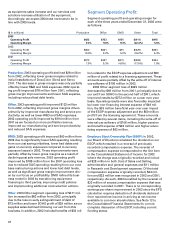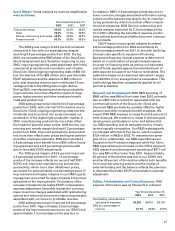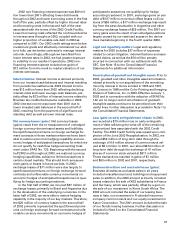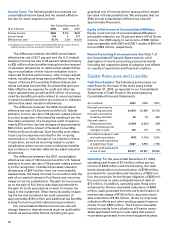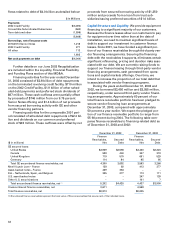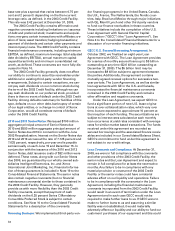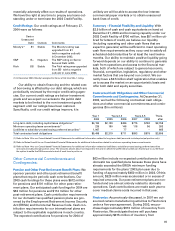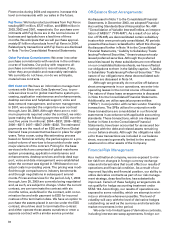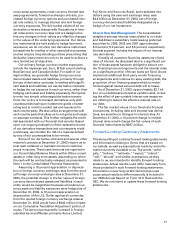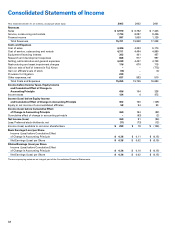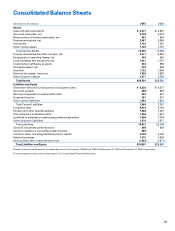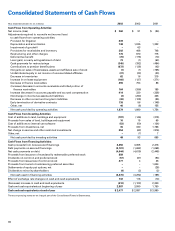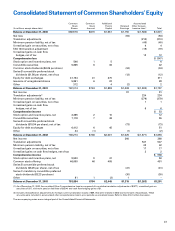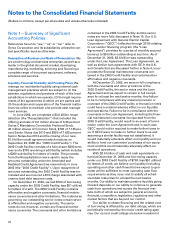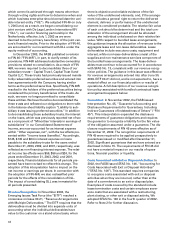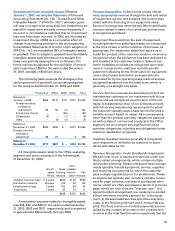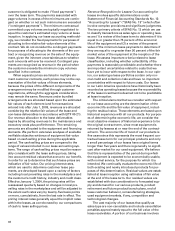Xerox 2003 Annual Report Download - page 38
Download and view the complete annual report
Please find page 38 of the 2003 Xerox annual report below. You can navigate through the pages in the report by either clicking on the pages listed below, or by using the keyword search tool below to find specific information within the annual report.
36
Flextronics during 2004 and expect to increase this
level commensurate with our sales in the future.
Fuji Xerox: We had product purchases from Fuji Xerox
totaling $871 million, $727 million, and $598 million in
2003, 2002 and 2001, respectively. Our purchase com-
mitments with Fuji Xerox are in the normal course of
business and typically have a lead time of three
months. We anticipate that we will purchase approxi-
mately $1 billion of products from Fuji Xerox in 2004.
Related party transactions with Fuji Xerox are disclosed
in Note 7 to the Consolidated Financial Statements.
Other Purchase Commitments: We enter into other
purchase commitments with vendors in the ordinary
course of business. Our policy with respect to all
purchase commitments is to record losses, if any,
when they are probable and reasonably estimable.
We currently do not have, nor do we anticipate,
material loss contracts.
EDS Contract: We have an information management
contract with Electronic Data Systems Corp. to pro-
vide services to us for global mainframe system pro-
cessing, application maintenance and enhancements,
desktop services and helpdesk support, voice and
data network management, and server management.
In 2001, we extended the original ten-year contract
through June 30, 2009. Although there are no mini-
mum payments required under the contract, we antic-
ipate making the following payments to EDS over the
next five years (in millions): 2004—$331; 2005—$332;
2006—$317; 2007—$307; 2008—$302. The estimated
payments are the result of an EDS and Xerox Global
Demand Case process that has been in place for eight
years. Twice a year, using this estimating process
based on historical activity, the parties agree on a pro-
jected volume of services to be provided under each
major element of the contract. Pricing for the base
services (which are comprised of global mainframe
system processing, application maintenance and
enhancements, desktop services and help desk sup-
port, voice and data management) were established
when the contract was signed in 1994 based on our
actual costs in preceding years. The pricing was modi-
fied through comparisons to industry benchmarks
and through negotiations in subsequent amend-
ments. Prices and services for the period July 1, 2004
through June 30, 2009 are currently being negotiated
and, as such, are subject to change. Under the current
contract, we can terminate the contract with six
months notice, as defined in the contract, with no ter-
mination fee and with payment to EDS for incurred
costs as of the termination date. We have an option to
purchase the assets placed in service under the EDS
contract, should we elect to terminate the contract
and either operate those assets ourselves or enter a
separate contract with a similar service provider.
Off-Balance Sheet Arrangements:
As discussed in Note 1 to the Consolidated Financial
Statements, in December 2003, we adopted Financial
Accounting Standards Board Interpretation No. 46R
“Consolidation of Variable Interest Entities, an interpre-
tation of ARB 51” (“FIN 46R”). As a result of our adop-
tion of FIN 46R, we deconsolidated certain subsidiary
trusts which were previously consolidated. All periods
presented have been reclassified to reflect this change.
As discussed further in Note 14 to the Consolidated
Financial Statements, “Liability to Subsidiary Trusts
Issuing Preferred Securities,” these trusts previously
issued preferred securities. Although the preferred
securities issued by these subsidiaries are not reflected
on our consolidated balance sheets, we have reflected
our obligations to them in the liability caption, “Liability
to Subsidiary Trusts Issuing Preferred Securities.” The
nature of our obligations to these deconsolidated sub-
sidiaries are discussed in Note 14.
Although we generally do not utilize off-balance
sheet arrangements in our operations, we enter into
operating leases in the normal course of business.
The nature of these lease arrangements is discussed
in Note 6 to the Consolidated Financial Statements.
Additionally, we utilize special purpose entities
(“SPEs”) in conjunction with certain vendor financing
transactions. The SPEs utilized in conjunction with
these transactions are consolidated in our financial
statements in accordance with applicable accounting
standards. These transactions, which are discussed
further in Note 4 to the Consolidated Financial
Statements, have been accounted for as secured bor-
rowings with the debt and related assets remaining
on our balance sheets. Although the obligations relat-
ed to these transactions are included in our balance
sheet, recourse is generally limited to the secured
assets and no other assets of the Company.
Financial Risk Management:
As a multinational company, we are exposed to mar-
ket risk from changes in foreign currency exchange
rates and interest rates that could affect our results of
operations and financial condition. As a result of our
improved liquidity and financial position, our ability to
utilize derivative contracts as part of our risk manage-
ment strategy, described below, has substantially
improved. Certain of these hedging arrangements do
not qualify for hedge accounting treatment under
SFAS 133. Accordingly, our results of operations are
exposed to some volatility, which we attempt to mini-
mize or eliminate whenever possible. The level of
volatility will vary with the level of derivative hedges
outstanding, as well as the currency and interest rate
market movements in the period.
We enter into limited types of derivative contracts,
including interest rate swap agreements, foreign cur-


